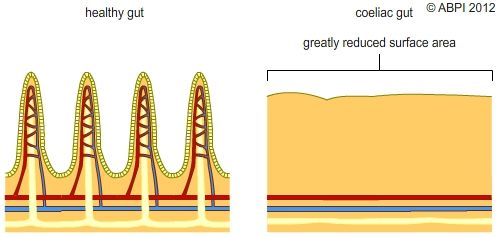This topic takes on average 55 minutes to read.
There are a number of interactive features in this resource:
 Human biology
Human biology
 Biology
Biology
 Physical education
Physical education
 PSHE / Citizenship studies
PSHE / Citizenship studies
The digestive system works throughout your life breaking down the food you eat. But sometimes things can go wrong. Problems in the digestive system can be very minor or they can be life-threatening.
Vomiting is when powerful contractions of the stomach muscles force partly digested food back out through the mouth. It may be the result of irritation or overstretching of the stomach after drinking or eating too much. It can also be caused by infection - some bacteria such as Campylobacter and Salmonella can withstand the acid environment of the stomach and infect it. Vomiting is usually mild and only lasts a few hours. However in the very young, the very old and in people who are already weakened by other diseases vomiting can cause death. Worldwide millions of people die each year as a result of vomiting and diarrhoea.
Stomach ulcers are formed when the protective layer of mucus in the stomach is damaged or reduced. The acid stomach contents eat into the stomach wall and cause pain. The most common cause of ulcers is infection by bacteria called Helicobacter pylori. Ulcers formed by bacterial infection can be cured using antibiotics. Very similar ulcers can also form in the duodenum.
Gall stones may form in the gall bladder. They are often made of cholesterol. The gall stones can get very big. If a stone blocks the bile duct, bile builds up in the gall bladder. This can be very painful. The gall stones can be broken down into tiny pieces using ultrasound. This unblocks the bile duct and allows the bile to flow out into the small intestine again. If the gall stones will not respond to ultrasound, the gall bladder will have to be removed by surgery.
Coeliac disease is caused by a reaction of the cells lining the small intestine to the presence of gluten, a protein found in wheat products. The lining of the gut becomes inflamed and the structure of the villi are lost, so the surface of the ileum becomes smooth. This means the surface area available for the diffusion of digested food molecules into the blood is greatly reduced. People with undiagnosed or unmanaged coeliac disease often become very thin. It cannot be cured but can be managed by removing all the gluten from the diet. This lets the cells of the ileum recover and the villi reform and work normally. Coeliac disease affects about one person in every hundred, so it is important that gluten free foods are readily available.

The difference between a normal ileum and one affected by coeliac disease
Appendicitis is the result of a blockage or infection in the appendix, a tiny and useless organ at the beginning of the colon. It is very painful. If an infected appendix is not removed by surgery it may burst. This can cause whole body infection and death.
Diarrhoea is when the large intestine or colon is irritated or infected and the food passes through it very rapidly. This means that little or no water is reabsorbed and so the faeces are liquid. In developed countries diarrhoea is often a short-lived and mild illness. However for the very young and the very old, or people who are either malnourished or already ill, diarrhoea can be fatal very rapidly. People die of dehydration and lack of salts in their body as liquid pours out of them. Diarrhoea isn't a disease itself - it is a symptom of many different diseases from E. coli infections to cholera and dysentery. Worldwide around 1.5 million children die every year of diarrhoea, often caught as a result of drinking dirty water contaminated with infected faeces from someone else.